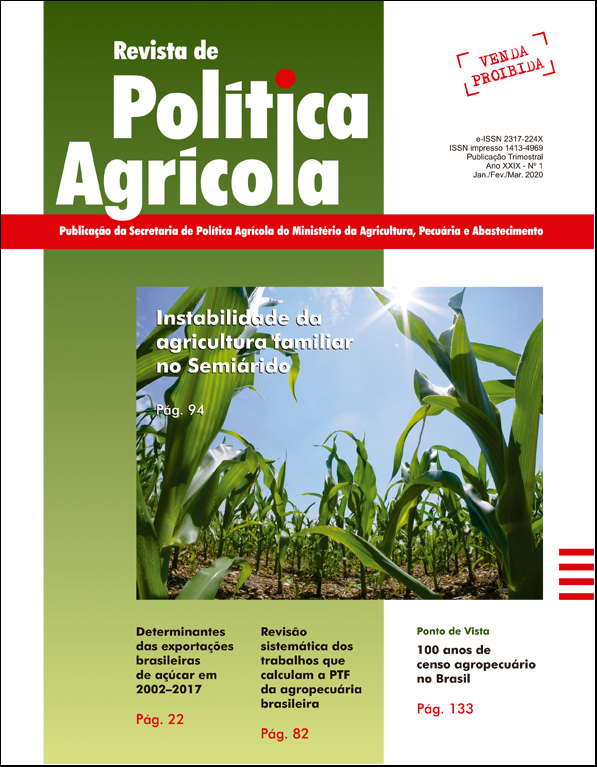Family farming instability in Brazilian Semiarid
Keywords:
Instable agriculture, rural poverty, food production, drought.Abstract
The objective of this study is to estimate temporal instabilities associated to harvested area, yield per hectare, production value, and production per person of bean, cassava and corn which are the principal food crops in family farms in semiarid municipalities of Ceará and Rio Grande do Norte States situated in Northeast of Brazil. The search period cover the years from 1991 to 2017. It used secondary Data published by Annual Agricola Production from IBGE (PAM/IBGE). There were utilized coefficients of variation (CV) of studied variables in order to capture instabilities among all of them. It was created the temporal instability index (INST) which was the used instrument to measure it. To do this it was used the factor analysis by the technique of decomposition in principal components. The results showed that all of the studied municipalities in both States had high or very high level of instabilities. The search also showed that instabilities in production of these crops is higher in Rio Grande do Norte than in Ceará State.Downloads
Published
2020-05-22
How to Cite
Lemos, J. de J. S., & Santiago, D. F. (2020). Family farming instability in Brazilian Semiarid. Revista De Política Agrícola, 29(1), 94. Retrieved from https://rpa.sede.embrapa.br/RPA/article/view/1478
Issue
Section
Artigos Científicos


